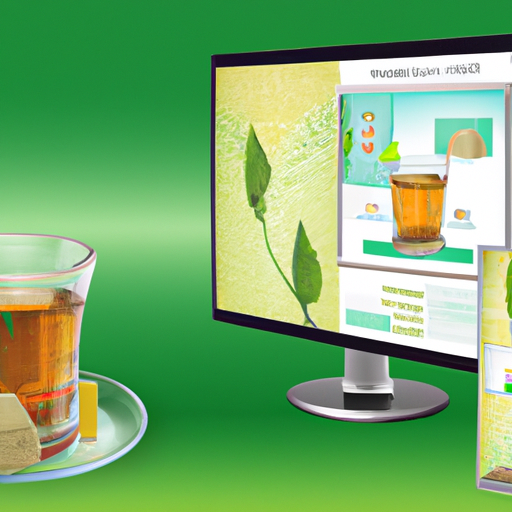Tea and Technology: How Modern Innovation is Shaping the Tea Industry
Have you ever taken a moment to appreciate the humble yet delectable cup of tea in your hands? The tea industry, for centuries, has been changing and evolving to meet the demands of tea enthusiasts like you and me. However, to cater to the ever-evolving needs and complexities of our ecosystem and society, technological innovations have become part and parcel of the tea industry. Are these machines the brew-ture of the tea world or just trendy gimmicks? Brew-se with us as we delve into how technology is shaping the tea industry today.
1. High-Tech Brewing Equipment
Modern tea brewing equipment is no longer limited to just boiling water, selecting tea leaves and steeping. Nowadays, there is a diverse range of high-tech brewing equipment at our disposal. Let us take a closer look at some of these innovations:
| Name | Description | Pros and Cons |
|---|---|---|
| Automatic Tea Maker | A machine that steeps tea leaves, automatically managing the brewing time and temperature. | Pros: Precise flavor extraction, easy to use, saves time |
| Cons: Expensive, not as personal as traditional brewing | ||
| Smart Kettle | A kettle that can be controlled and adjusted via a smartphone or other smart devices. | Pros: Custom temperature and Keep Warm, Scheduled Brewing |
| Cons: Expensive, reliant on smartphones, less physical interaction | ||
| Tea Infuser Tumbler | A portable tumbler containing a built-in infuser, designed for brewing loose leaf tea on the go. | Pros: Travel-friendly, encourages making tea a daily habit |
| Cons: Limited space for tea leaves to expand, potential for over-steeping |
Each of these innovations serves a specific purpose and comes with its own set of advantages and disadvantages. As with any other technological advancement, it is essential to balance personal preferences with practicality.
2. IoT and AI in Tea Production
While fancy brewing equipment seems interesting, the real magic of technology lies in how it is streamlining tea production.
IoT (Internet of Things) in Tea Production
IoT plays a crucial role in modern tea production to automate and regulate the driving forces behind tea cultivation. IoT-enabled devices allow tea producers to monitor environmental conditions (temperature, humidity, and moisture level) remotely, ensuring optimal conditions for tea growth. This translates to better tea quality and higher yields.
AI (Artificial Intelligence) in Tea Production
AI is truly changing the game by enabling precision agriculture. Machine learning algorithms can process large volumes of farm data (soil, climate, and plant information) to identify optimal vs. suboptimal tea-growing conditions. Furthermore, AI can identify any diseases affecting tea bushes and recommend corrective measures.
3. Drones for Tea Plantation Monitoring
Tea plantations sprawling across vast landscapes can be difficult to monitor and assess regularly. Enter drones: aerial gadgets that are revolutionizing plantation monitoring. Drones can capture high-resolution images and analyze plant health, pest infestations, productivity estimates, and even assist in the prevention of illegal land encroachments.
4. Robotics in Tea Production
Another technological innovation is the use of robotics in tea production. Robotic tea plucking machines are used to replace manual labor in some tea-producing regions. Although they may lack the finesse and dexterity of human hands, these machines have the potential to increase efficiency and productivity.
| Advantages of Robotic Tea Pluckers | Disadvantages of Robotic Tea Pluckers | |
|---|---|---|
| 1. Labor-saving | 1. May result in job losses | The contentious issue of replacing human labor remains a topic of debate. |
| 2. Efficient | 2. Not suitable for all tea varieties | Robotic pluckers may not have the finesse to handle delicate tea varieties. |
| 3. Consistency | 3. Expensive | The initial cost of investment in robotic tea pluckers is high. |
5. Blockchain Technology in the Tea Industry
In an industry riddled with complexities and ethical concerns, transparency and traceability hold great value. Blockchain technology can be utilized to track and trace a tea product throughout its life cycle – from farm to cup. Tea consumers can become well-informed patrons by scanning a QR code on the tea package, accessing the tea's journey, and verifying the ethical practices employed in its production.
6. AI ChatGPT in the Tea Industry
In the rapidly evolving digital age, AI-powered language models like ChatGPT have shown great potential in enhancing communication and customer service in various industries, including tea. ChatGPT can be employed on tea companies' websites and online stores to interact with customers and answer queries about tea types, brewing methods, health benefits, and more. This personalized approach enhances customer experiences and fosters brand loyalty by not only ensuring customers get the information they need but also offering tailored recommendations for their unique preferences.
Conclusion
As with most things in life, technology, when channeled correctly, holds immense potential in shaping and transforming the world of tea. The advancements we see today not only improve our everyday tea consumption experience but also drive sustainability and ethical practices in the tea industry. So, the next time you sip your cup of tea, don't forget to appreciate the interplay of tradition and technology that brought it to your hands in the first place.
